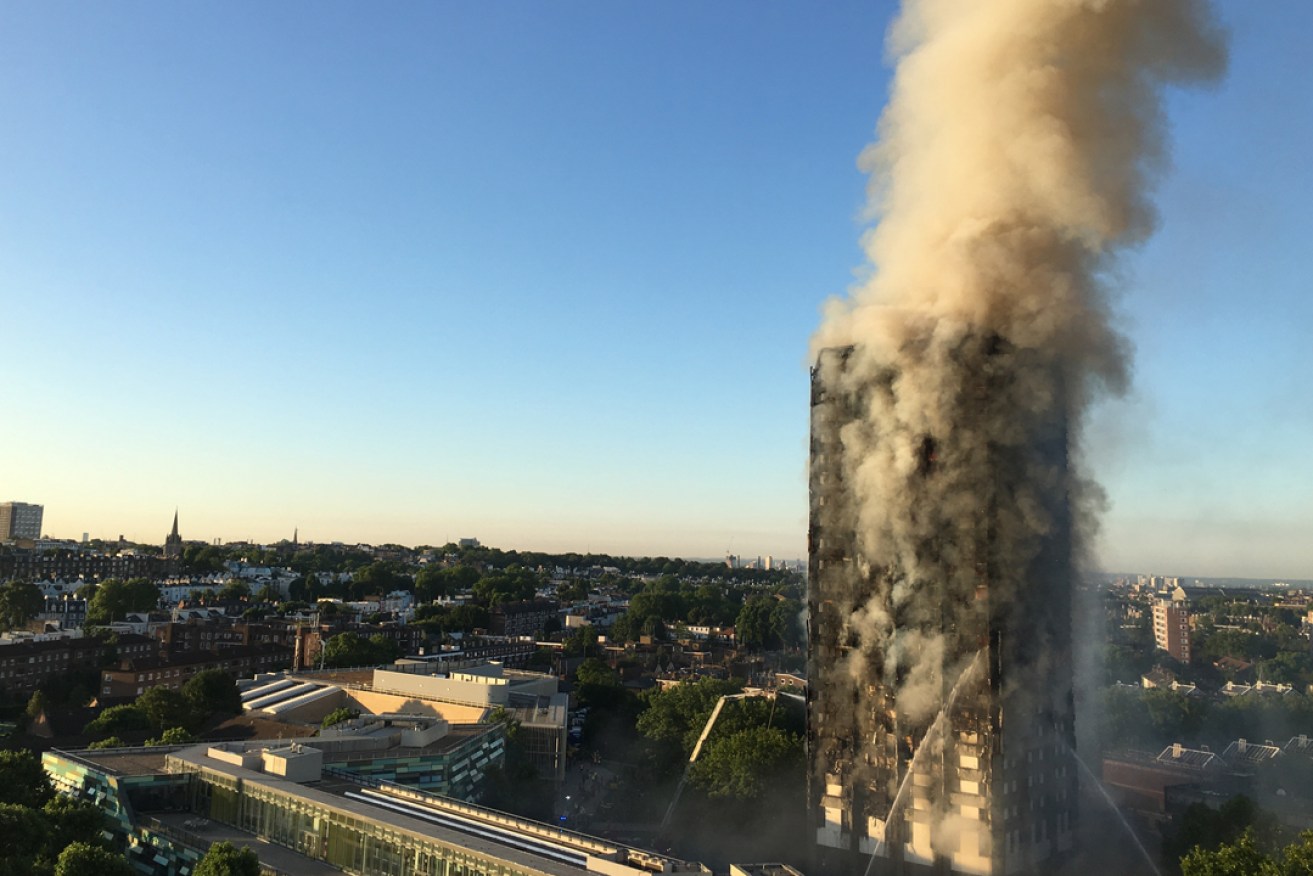Adelaide buildings at “extreme risk” from flammable cladding
A major new report has found seven Adelaide buildings at “extreme risk” of fire from flammable cladding – but the State Government won’t identify them, and says there’s no need to evacuate residents or tenants.


Smoke billows from the fire that engulfed London's 24-storey Grenfell Tower in 2017. Photo: PA
The State Government launched a statewide audit of potentially flammable cladding on high-rise residential and assembly buildings in 2017, in the aftermath of London’s Grenfell Tower disaster, in which 72 people died after a fire spread rapidly up the building’s external cladding.
Today, the Government released the findings – but not the text – of the interim report from the audit, showing that seven private buildings in South Australia have been assessed as being at “extreme risk”, and requiring immediate action and remedial work.
Despite the identified risk, a Government spokesperson told InDaily today that there is “no need for anyone to be evacuated”.
However local councils will be expected to ensure that the owners of those buildings take the “necessary actions” to reduce risk to an acceptable level, and those owners, in turn, will be tasked with informing tenants about the findings.
A further 21 unidentified private buildings were assessed during the audit as “high risk” – meaning they need remedial action within 12 months.
The report says two publicly owned Adelaide buildings were also deemed to be at high risk.
One is a toilet block. Another is a construction site, currently inaccessible to the public.
“Security and safety have always been one of the primary reasons that we do not reveal the exact locations of buildings with significant cladding issues in line with other states,” said Infrastructure and Planning Minister Stephan Knoll in a statement today.
“As a government, safety is at the forefront of all our decisions and that’s why we will not be disclosing the exact locations.
“We will continue to update South Australians on how the remediation works are progressing as appropriate.”
Knoll said the remediation works include removing flammable aluminium composite panel (AMP) cladding from around building exits.
They also include removing the cladding from proximity to balconies and away from the first three metres above ground – changes the minister characterised as “relatively minor”.
“For privately-owned buildings, councils are responsible for ensuring that owners of private buildings in their jurisdictions take the necessary actions to reduce the risk to an acceptable level,” he said.
“It is our expectation that building owners will notify occupants of their respective buildings and keep them informed throughout the remediation process as appropriate.
“The department will be working very closely with councils and building owners to ensure remediation works are carried out and these buildings meet the acceptable standard.”
The audit found that 124 buildings across 19 South Australian council areas featured ACP cladding, from which the aforementioned seven were assessed as being at extreme risk.
“The safety of South Australians is the State Government’s top priority and we will be working with councils and private building owners to ensure remediation works are carried out as quickly as possible,” said Knoll.
“We have also been working with the Metropolitan Fire Service (MFS) throughout the audit process and they have developed heightened awareness and response procedures for the 28 buildings with unacceptable levels of risk.”
All buildings identified in the audit will be added to the MFS Computer Aided Dispatch System, so that the presence of ACP cladding is instantly flagged in the event of an emergency at those locations.
The Government says it will monitor remediation actions and produce a final audit report once the risk rating for all of the identified buildings has been reduced to “moderate” or below.
Adelaide Convention Centre, Royal Adelaide Hospital feature aluminium cladding
Last year, the State Government revealed that the Royal Adelaide Hospital, the Women’s and Children’s Hospital, Adelaide Convention Centre and Adelaide Oval each featured aluminium composite panel cladding.
However, it said the buildings were assessed as “low or moderate risk”.
Department of Planning, Transport and Infrastructure refused a request under freedom of information laws by the ABC for the list of buildings identified in the flammable cladding audit, citing the department’s “business affairs,” the national broadcaster reported in July.
The ABC reported the following month that the Government was considering taking legal action against contractor Lendlease and architect Woods Bagot over concerns that non-compliant cladding could have been used as part of the Adelaide Convention Centre redevelopment – but that the Government said “sufficient safety systems” were in place at the centre.
Want to comment?
Send us an email, making it clear which story you’re commenting on and including your full name (required for publication) and phone number (only for verification purposes). Please put “Reader views” in the subject.
We’ll publish the best comments in a regular “Reader Views” post. Your comments can be brief, or we can accept up to 350 words, or thereabouts.
InDaily has changed the way we receive comments. Go here for an explanation.




